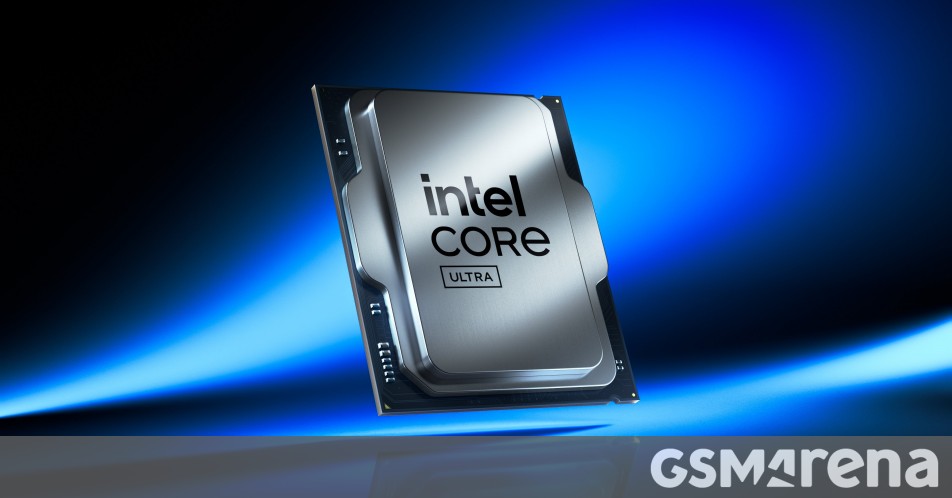Intel has announced its latest generation Core Ultra 200S series of desktop processors based on its new Arrow Lake architecture. This new generation boasts of modest improvements in performance but with much greater advancements in efficiency.
Intel is claiming 9% improvement in IPC (instructions per clock) for the P-cores compared to 14th gen, 32% improvement in IPC for the E-cores, which the company claims results in up to 13% improvement in multi-threaded performance compared to the competition. However, it’s not all about performance this generation, as Intel claims 40% reduction in package power this generation and lower temperatures.
The new Arrow Lake chips come with a new CPU design, with Intel moving away from its traditional monolithic design to a new tile-based design. Each component is on a separate tile, with the CPU, GPU, SoC, and IO all getting their own tiles, along with a base tile and filler tile completing the package. The new CPU or compute tile floor pan shows the new design, with the P-cores and the E-core clusters all sharing the same L3 cache with dedicated L2 caches.
Being announced today are five new SKUs, which includes the Intel Core Ultra 9 285K at the top replacing the previous Core i9-14900K, the Core Ultra 7 265K and 265KF replacing the Core i7-14700K and 14700KF, and the Core Ultra 5 245K and 245KF replacing the Core i5-14600K and 14600KF.
The 285K has an 8P+16E core design while the 265K has 8P+12E cores. The 245K gets 6P+8E cores. This is similar configuration to the 14th gen models, with a major difference being that there is no HyperThreading anymore, so each of the P-cores have a single thread each, just like the E-cores.
All models with an iGPU get 4 Intel Xe Cores and all models have an NPU built-in capable of 13 TOPS.
Intel has also made some concessions to the clock speeds on the 200S series compared to previous generations. The flagship 285K now hits up to 5.7GHz compared to 6GHz on the 14900K. The 265K and 245K are similarly down compared to their predecessors.
In terms of performance, Intel has some mixed claims to make. The important thing to note is that these all relate to the flagship 285K, as the company has provided no performance data for the 265K and 245K models.
Starting with productivity performance, Intel claims the 285K is on average 8% faster than the 14900K and 4% faster than the 9950X in single-threaded workloads. Meanwhile, the 285K is 15% faster than the 14900K and 13% faster than the 9950X in multi-threaded workloads. Intel also claims the 285K can achieve the same multi-threaded performance as the 14900K at half the power.
Where things get underwhelming is in gaming, where Intel outright claims performance parity with the 14900K in gaming, which means you can expect to get similar or even identical frame rates in most games. The only silver lining here is that Intel claims that the 285K can achieve this parity at much lower power figures so even though you aren’t getting more frames, you are burning much less power to do so. On average, Intel is claiming around 73W reduction in total system power consumption with figures as high as 165W in some cases.
Lower power also means lower heat generation, and Intel claims the 285K runs on average 13 degrees cooler than the 14900K.
Having said that, while the 285K is more efficient than the 14900K, that does not mean it consumes less power in general. Like the 14900K, the 285K has a maximum power turbo power of 250W. This is also true for the 265K, while the 245K clocks in at 159W.
The new generation of processors come with new socket and motherboard chipsets. The 200S series chips are compatible with socket LGA1851 and Intel 800 Series chipset. Compared to the 700 Series, 800 Series has more PCIe lanes and drops support for DDR4 memory. Speaking of memory, all the new chips support 6400MHz memory as the new JEDEC standard, with Intel recommending 8000MHz.
The Core Ultra 9 285K is priced at $589, the Core Ultra 7 265K at $394, and the Core Ultra 5 245K at $309. Sales and pre-orders start October 24.

